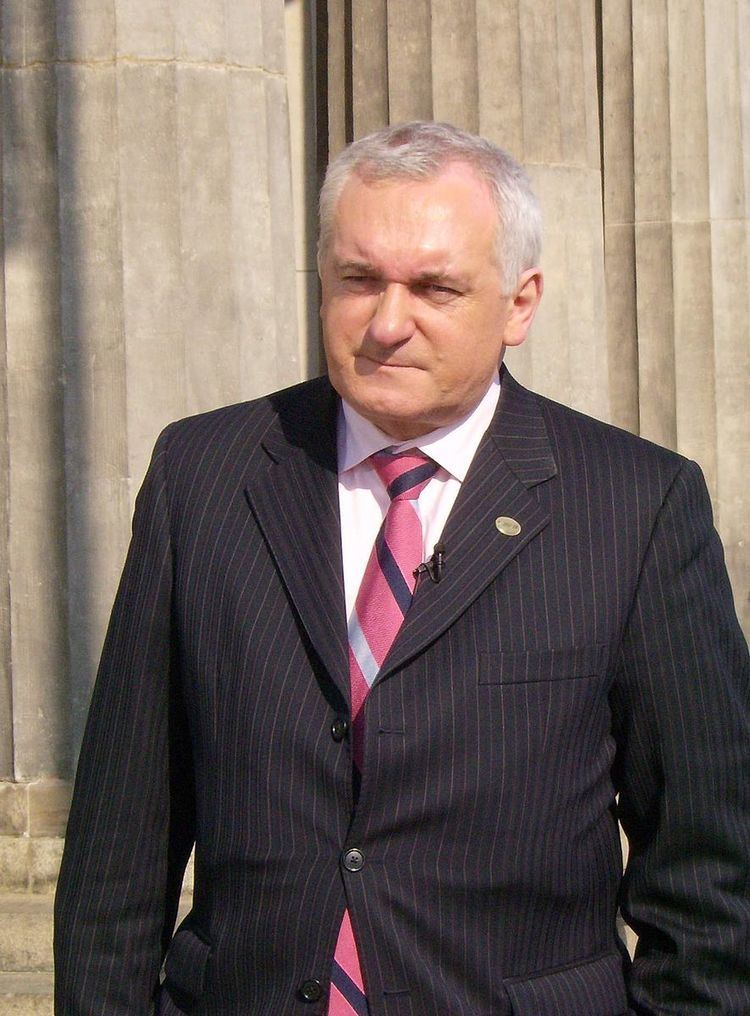6 June 1997 2002 → 68 seats, 39.1% 45 seats, 24.5% 67 47 | Turnout 76.5% 45 seats, 24.5% 33 seats, 19.9% 47 32 | |
 | ||
The Irish general election of 1997 was held on Friday 6 June 1997. The 166 newly elected members of the 28th Dáil assembled on 26 June 1997 when a new Taoiseach and government were appointed.
Contents
The general election took place in 41 parliamentary constituencies throughout Ireland for 165 seats in the lower house of parliament, Dáil Éireann.
Overview
The 1997 general election saw the public offered a choice of two possible coalitions. The existing government was a coalition of Fine Gael, the Labour Party and Democratic Left – the so-called "Rainbow Coalition". This in very broad terms could be described as a centre-left coalition. It was opposed by a possible coalition of Fianna Fáil and the Progressive Democrats, which most Irish commentators regarded as a centre-right coalition.
Following the election none of the major parties had a clear majority. Negotiations resulted in a Fianna Fáil–Progressive Democrats coalition taking office. Four Independent Teachta Dála (TDs) also supported the government ensuring an overall majority. Bertie Ahern became the Taoiseach while Mary Harney of the Progressive Democrats became Tánaiste.
Although Fine Gael gained seats, it crossed the Dáil chamber to the Opposition benches. Fianna Fáil also increased its representation, but the Progressive Democrats had a disastrous election, losing more than half their seats – including ones thought safe such as Cork North-Central and Dún Laoghaire, despite no decrease in their vote. The Green Party picked up an extra seat, with John Gormley elected in Dublin South-East. He was elected by just over 30 votes after a marathon recount, lasting four days, saw Progressive Democrat Michael McDowell defeated. The main feature of the election, however, was the collapse of the Labour Party vote. Not only did it lose seats it had picked up in the 1992 general election, when its vote was an at all-time high – such as in Clare and Laois–Offaly – but it also lost reasonably safe seats, such as in Dublin North, Dublin Central and Cork South-Central.
Dick Spring would later retire as leader of the Labour Party. Democratic Left also suffered, losing its two gains made in by-elections during the 27th Dáil. Sinn Féin won a seat for the first time since 1957, in the Cavan–Monaghan constituency with the election of Caoimhghín Ó Caoláin. It also narrowly missed a seat in Kerry North. The Socialist Party, a Trotskyist party which consisted of former members of the Labour Party expelled in 1989, gained a seat in the Dublin West constituency.
Results
The outgoing Ceann Comhairle retired at this election. Independents include Independent Fianna Fáil (11,607 votes, 1 seat).
Dáil membership changes
The following changes took place as a result of the election:
Outgoing TDs are listed in the constituency they constested in the election. For some, such as Kildare North, this differs from the constituency they represented in the outgoing Dáil. Where more than one change took place in a constituency the concept of successor is an approximation for presentation only.
